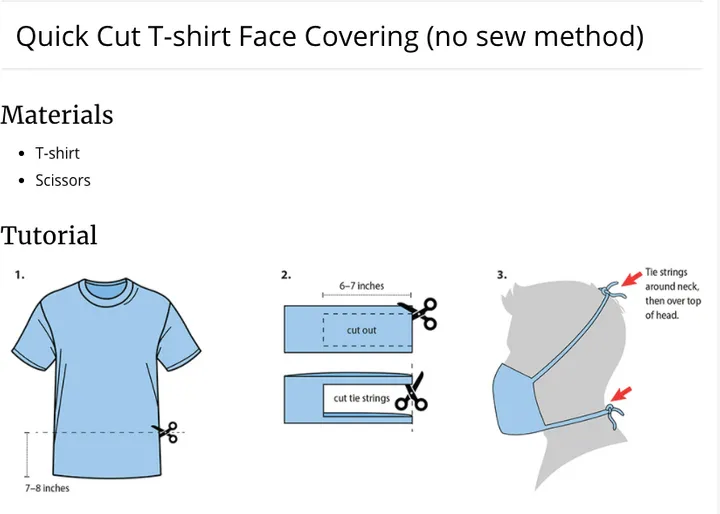Masking the Home-made way
Given the global dearth of marks for general public, various health agencies around the world now recommend the use of cloth face coverings and masks.
In HK thankfully masks can be found relatively easily in the pharmacies, but they come at a cost.
Those with creative hands or those who want to save some dollars can craft some home made masks - Sewn or non sewn, from different tissues such as socks, bras and hairbands. We have done our research and list below 3 masks recommended by reputed medical associations that are easy to make at home. If you are interested in the idea, please note that one of the best fabrics for making a DIY face mask is cotton. Also, benefit of a cotton mask is that it’s washable, making your mask reusable.
Before we begin please note that to know whether a mask is fitting you perfectly, it should have multiple layers of fabric that fits you perfectly. It should not either be too loose (risk of infection) or too tight (difficulty of breathing), just snug enough to fit your face. If possible, we recommend you consult with a health specialist or someone in the field of mask-making to make sure your mask is appropriately made for daily usage! Also, Homemade masks are not a substitute for social distancing and staying home!
Face-mask type 1: Go Bandana
This one is another no-sew face mask which can be made from any kind of bandana-like material such
as handkerchiefs or shawls
Materials required:
1. Bandana-like material e.g cloth hairbands, shawls (preferably in cotton or thicker materials)
2. Coffee filter
3. Rubber bands or any kind of elastic band e.g hair ties
4. Scissors (if you have to cut the cloth on your own)
Face-mask 2: Tee-mask

If you have an old t-shirt that you're not going to wear anymore, why not upcycle it by using
one tee and making several masks out of it? It's reusable and environmentally-friendly! Just
make sure that after each use, throw it in a bucket of boiling water to kill any viruses attached
to the mask surface for at least 15 minutes then leave to dry overnight
Material:
1. T-shirt
2. Scissors
Face-mask type 3: Sewn-cloth face covering mask
Our Localhood team recommends this as the most conventional and protective facemask as this is
guaranteed to simulate the 3-layered surgical mask, but always make sure to consult with a health
specialist on whether these masks are perfect for you! Surgical masks are great but they do contribute to plastic pollution as well as the rarity of finding a pack can be frustrating at times, so these life hacks are viable solutions.
Materials:
1. Two cotton cloths/fabrics (25 x 15cm)
2. Two 15cm pieces of rubber bands or any kind of elastic band e.g hair ties
3. Needles and thread
4. Scissors
5. Sewing machine (if you don't have one, just hand stitch along the hem lines)

Step 1:
Cut out two 25 by 15 cm rectangles from a cotton fabric or any other fabric that might be a little more
dense and fabricated. Stack the two rectangles together and sew these two pieces together to make
your double layer that is required for a proper filtering mask.

Step 2:
Fold over the long sides 6.35 mm and hem. Then fold the double layer of cotton or other fabric half an
inch along the short sides and stitch them down. This might take a little more time if you are using a
pin and needle as well as more precision might be needed to make the hemming more accurate so a
sewing machine would be much better.

Step 3:
Put a 6-inch length of the one eighth inch-wide elastic through the wider hem in each side of the
mask. These will act as the loops around your eyes. Then use a larger needle to thread it through. Tie
the ends tight so that they do not fall out. You can also use rubber bands or hair ties to act as the ear
loops but they might be quite rough on the skin of your ear after repeated use so take note of that.

Step 4:
Gently pull on the elastic so that the knots you created can be tucked inside the hem. Gather the sides of the mask on the elastic and adjust the mask to the size of your face. Then securely stitch the elastic in place to prevent it from slipping off of your face.
There you have it! Three completely different ways of creating your own hand-made masks!
Hopefully you will have all the materials to create any one of these masks as they can be found in
most households. Again please take care of yourselves, practice physical social distancing, sanitize and wash your hands frequently!



